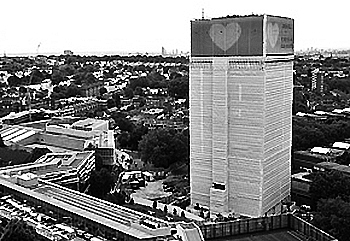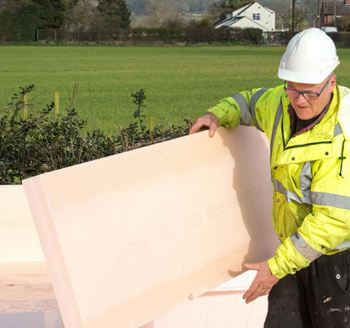About Diego Ratti Architect
I'm an architect and real estate valuetor with ISO 17024 certification. My clients are mainly banks, r.e. invest., construction comp., etc.

From speculation to Yield Management
Today is no longer considered a low risk practice to invest in the property industry. The speculative bubble, which in the last decade has distorted in a significant way the normal cycle routine of the economic phases, has shown how the risk profile has been too often underestimated, or even hidden from operators. The example of the European southern countries is not negligible. The effect on the economic system has been dramatic and surely not to be imitated.
The principle cause of this process is the introduction on the market of a high quantity of bank’s capital, available to all investors, qualified or not, to invest in high risk profile real estate developments in total absence, or so, of equity. In this speculation optic, if the process was successful the debit passed from the building contractor to the consumer, with great profit of the entrepreneur and high risk for the bank, wile if the process was to fail, the problem and his costs remained to the principal financer partner, the bank.
This bad habit, which I no longer want to dwell on, compels the new generations of building contractors to turn page and face the investments in a more scientific and systematic, objectively analyzing risk, and comparing it with other opportunity.
In now a day situation property trade does no longer looks attractive for investors. The expected yields are too low, more often lower then the capital market and with an high risk profile.
The idea we submit here in the current new real estate projects is the one to consider the building not the aim of the investment (to be sold or rent) but as an equipment case of a more complex entrepreneur activity.
The building is considered as a container of varies activities, which satisfy not only the residential needs but also several services connected with it.
The consumer will choose the type of building that more compliances his needs, in terms of costs and efficiency. The existing building, all over the world, are too often created for a generic market were the only or principal purpose is offer a place call home or an office headquarter without taking in right consideration the complexity of service needed, generally disconnected from the context and empowered by the public.
The true challenge of the new real estate market is exactly the one that will generate buildings or neighbourhoods with high level of integration between home facilities and correlated services, were the contractors can in part avoid the risks of the investments with the incomes coming from this residential service and/or with the earnings coming from electrical production of sustainable energies.
This is a new way, surely more complex, of draw up a investment project, not only buildings but also services for users and consumers, before scheduling a project at urban and/or building scale.
Eventual looses or squaring of the financial statement of the rental activity, could be compensated from incomes created with facilities hosted in the building/property itself, from the improvement of the efficiencies and from profits coming from building activity.
A concrete example of this type of activity is found in the specialized buildings. Take, for example, the case of a building for young people, maybe within the city centre and well connected by public transports, where the main need is the accommodation and where the necessities of the user are also the cleaning services, catering service, laundry services, of access to internet, of lounge and meeting , surveillance and more. All this, obviously without forget the investor/owner, that on the other hand need low running costs of management, therefore high energy efficiency buildings, with low costs of maintenance and well scheduled, with a strong attention to the production of sustainable energies.
Now the user will look for and will choose the building that, within the same rent /cost, will offer better services, better environment were to live, without renounce to the comforts that life stile demands.
This type of operations, are the most difficult to study from an economic point of view and they require a multidisciplinary approach acting on different scales, from town to neighbour, from neighbour to the building, to the accommodation, to the building and technologic detail. All has to be included in a developing project of complex transformation which involves investor, public administration and citizens.
A real estate project with these characteristics, well supported by verifiable and comparable economics evaluations, could met the banks’ appeal, which could distribute loan in a better scheduled way, with a better controlled and certain rate “Loan To Value”, so with less risks.
Here is why in the decision process of the financial credit, even banks can better choose were to invest, or better co-invest within well programmed activities and projects.
All these factors can clearly help to stabilize an economic system, avoiding the speculative bobbles, rewarding the work of the wise entrepreneurs which invest in the urban fabric, developing work society and progress.
Diego Ratti Architect
Translation Gaddo Savi Architect
Featured articles and news
Ebenezer Howard: inventor of the garden city. Book review.
Grenfell Tower fire – eight years on
A time to pause and reflect as Dubai tower block fire reported just before anniversary.
Airtightness Topic Guide BSRIA TG 27/2025
Explaining the basics of airtightness, what it is, why it's important, when it's required and how it's carried out.
Construction contract awards hit lowest point of 2025
Plummeting for second consecutive month, intensifying concerns for housing and infrastructure goals.
Understanding Mental Health in the Built Environment 2025
Examining the state of mental health in construction, shedding light on levels of stress, anxiety and depression.
The benefits of engaging with insulation manufacturers
When considering ground floor constructions.
Lighting Industry endorses Blueprint for Electrification
The Lighting Industry Association fully supports the ECA Blueprint as a timely, urgent call to action.
BSRIA Sentinel Clerk of Works Training Case Study
Strengthening expertise to enhance service delivery with integrated cutting-edge industry knowledge.
Impact report from the Supply Chain Sustainability School
Free sustainability skills, training and support delivered to thousands of UK companies to help cut carbon.
The Building Safety Forum at the Installershow 2025
With speakers confirmed for 24 June as part of Building Safety Week.
The UK’s largest air pollution campaign.
Future Homes Standard, now includes solar, but what else?
Will the new standard, due to in the Autumn, go far enough in terms of performance ?
BSRIA Briefing: Cleaner Air, Better tomorrow
A look back at issues relating to inside and outside air quality, discussed during the BSRIA briefing in 2023.
Restoring Abbotsford's hothouse
Bringing the writer Walter Scott's garden to life.
Reflections on the spending review with CIAT.
Retired firefighter cycles world to raise Grenfell funds
Leaving on 14 June 2025 Stephen will raise money for youth and schools through the Grenfell Foundation.
Key points for construction at a glance with industry reactions.






















